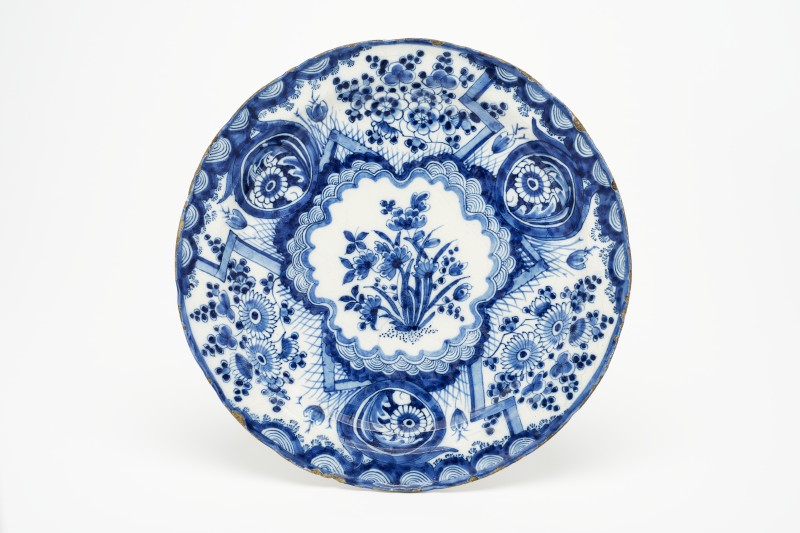Teller auf Standring mit leicht gewölbtem Spiegel, kurzem, steilem Anstieg und schmaler, schräg ansteigender Fahne.
Im Spiegel Blütenstaude umgeben von mehrfach gewellter Umrahmung, daran anschließend Blütenzweige und drei zu einem Dreieck komponierte Medaillons mit je einem gezackten Blatt und Blüte. Dazwischen drei kantig umbrechende zaunartige Bänder (sog. Blitzmuster). Am Rand konzentrische Kreissegmente. Auf der Unterseite des Anstiegs sechs Vierpunktrosetten.
Großer Sprung von der Fahne bis zum Spiegel, zahlreiche Ausbrüche und Glasurabplatzungen am Rand, feine Haarrisse in der Glasur, auf der Unterseite des Anstiegs drei Pinnenspuren.
Ohne Marke
Ankauf von Bourgeois & Co., Köln, 1907
en

